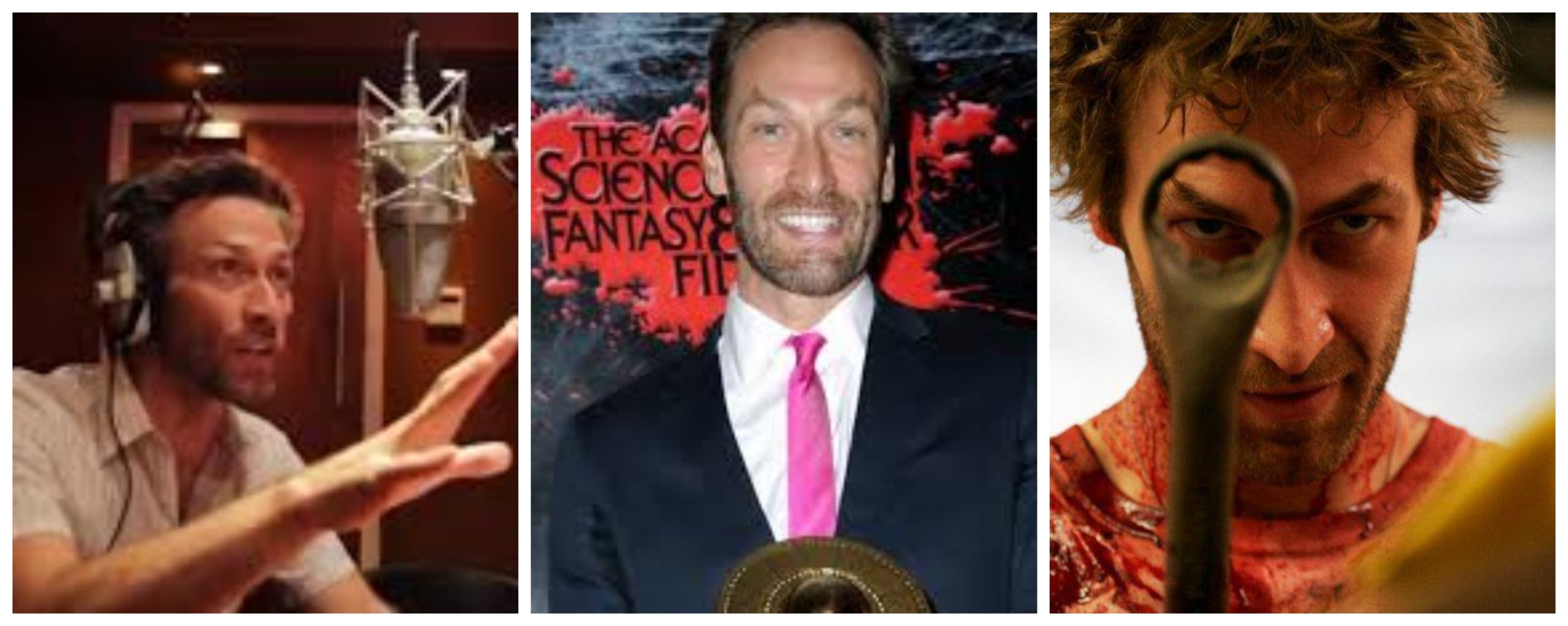
When I finished watching Dave Made a Maze (2017) last year, I was in awe. (Read my review of the movie here.) So few movies involve this level of creativity and thought, which may be a strange thing to say, but I challenge you to argue the point after watching it. It’s listed as a horror comedy, but the social messages embedded in the story are emotionally strong. A thirty year old creative isolates himself in a cardboard fort in his living room because he doesn’t think he is good enough to become a fully functioning adult. He doesn’t know how to, and the world doesn’t care if he does or doesn’t. Pretty bleak, right? The thing is, by the time I realized this was one of the central messages of the movie, I was already fully entranced by the scenes and cinematography, laughing along with characters who interact so naturally I felt like I was part of their club, and having an overall damn good time. When the story started to tug on my heart strings I was lost.
As a small time writer, I had no business reaching out to co-writer/director William (Bill) Watterson, but I did it anyway. To my absolute delight, he responded! Bill Watterson is better known as an actor and musician, but he was happy to talk with me about Dave Made a Maze. The following is our conversation about his career, what it was like making Dave Made a Maze, and other fun things that you’ll just have to discover for yourself. Read on, horror lovers, and pass it around. Bill Watterson is a genuinely great guy, and Dave Made a Maze is the next movie you need to stream!
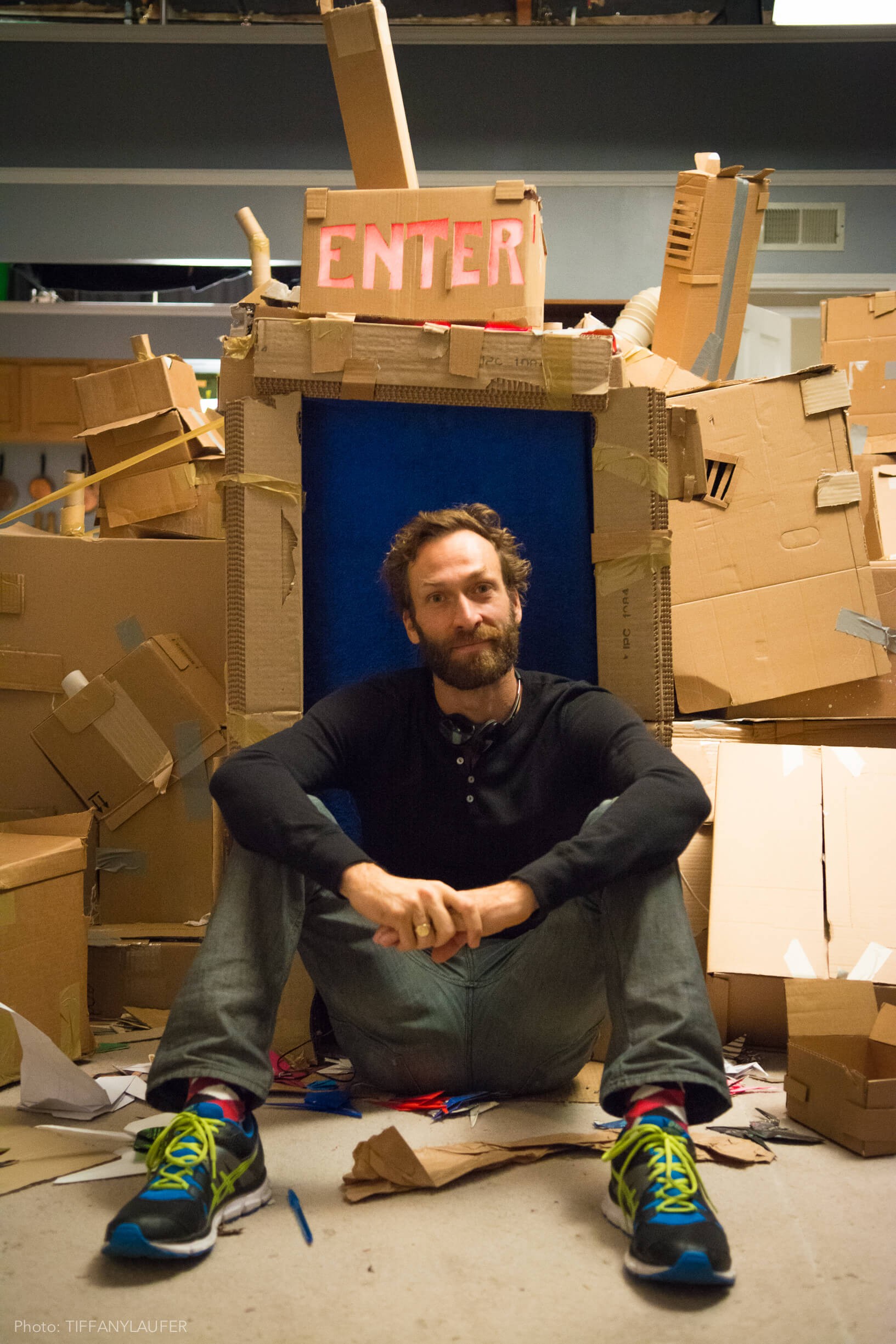
KDJ: I found your movie Dave Made a Maze last month and knew I needed to pick the brain of the evil genius behind its creation. Would that be you, or co-writer Steven Sears? (haha)
BW: There were hundreds of evil geniuses behind it! But Steve definitely laid out the world in a fantastic way that only a unique mind like his could. He had a 60-plus page draft before any of us got our hands on it, and it had a ton of the material that is in the final product—the cardboard maze, where’s that beard at, Dave’s meltdown monologue, the giant lady part, the stalking Minotaur, life is a series of incomplete moments from which there is no escape—it was all in Steve’s earliest draft. He and I worked together on maybe a dozen drafts moving forward, tightening elements, vocalizing themes, trying different kills (there were so many great kills we didn’t get to shoot!), looking for consistency of behavior in characters, all the other shaping that goes on through subsequent drafts. Then the actors did stuff we never could have predicted, and the production designers and art department delivered a level of fantasy and detail that took everything to new heights. But Steve drew the map, gave us our world.
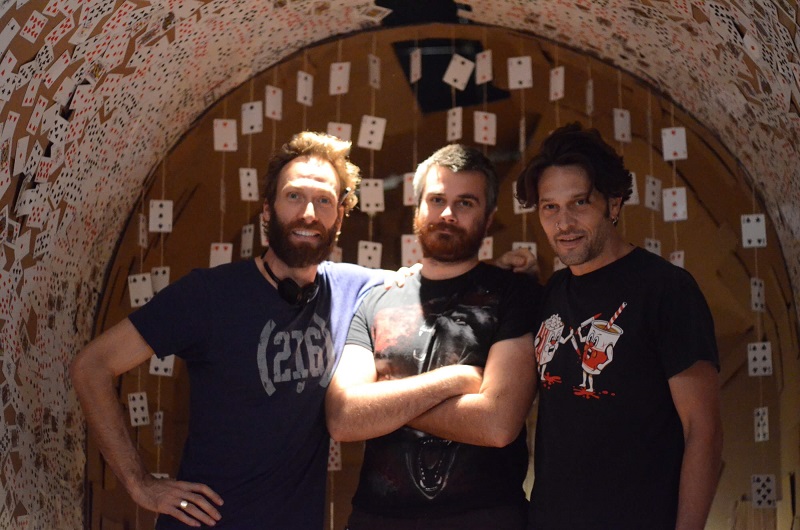
KDJ: Was this your first time working with Steven creatively, or were you already aware that the two of you had this alchemical ability to make something magical together?
BW: We met as students at Second City, and his improv and comedy team was a regular part of the ensemble cast in a vaudevillian throwback show that another friend and I produced and hosted intermittently for a few years, so we had collaborated in various capacities before. Never sitting laptop to laptop, writing a script, the way we did for ‘Dave,’ but certainly we were friends and creative collaborators going into the movie.
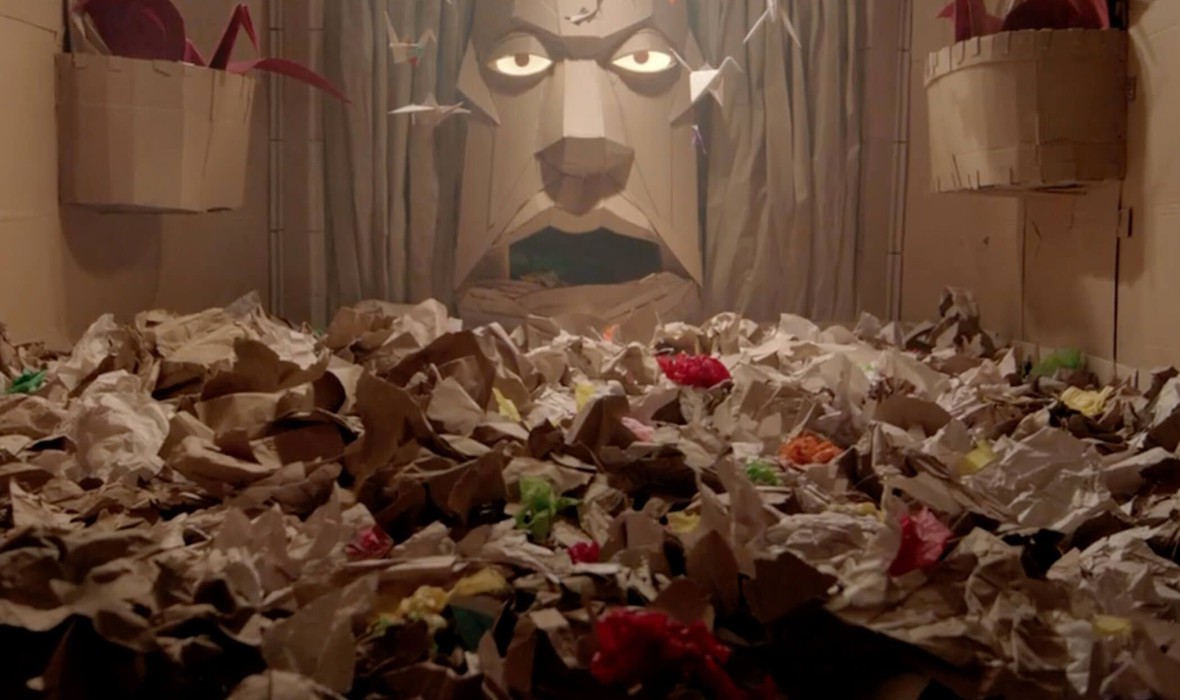
KDJ: The entire movie is visually stunning, but several moments really stood out to me. The transition of the cardboard piano keys into the keyboard box into the black and white hall of chambers was flawless. How long did that take to film? Was that your vision? How about the red ribbon tied around Kirsten Vangsness’s neck to portray her decapitation? The stop motion animation of the levers and gears? The dragons? How much of these impressive details were yours, and how much creative license was afforded to your set design team?
BW: Huh..I don’t remember any dragons…maybe the Maze is still expanding in your mind? [note: see image caption above] I don’t think we had many sets up for more than a day. The Piano Room was maybe half a day. It’s great that you love that room—I know our Production Designer Jeff White was disappointed with how it turned out, he had ambitions to take it further and always felt that was the one that got away. And that’s how we were able to achieve at a high level under obscene constraints—everyone cared that much, everyone wanted to bring every bit of themselves to the building of the world.
As far as the Piano Room being my vision, it was close—I think, like Jeff, I might have wanted to blend into it more, I think we might have even had floor elements that were keys at one point, and maybe staggered the transition even more in the architecture, but I do still dig it. I don’t know that I delivered on the clarity of the ribbons carrying Dave’s voice like notes off a musical manuscript—that never felt like my best actualization of what was in the script. But it was fun building a miniature set for the cast POV reveal of the extent of the room!
The entire Origami Room scene had to be shot in half a day. Not ideal, but we got it done.
I think we had half a day for Jane’s decapitation scene, maybe less. A few hours. Such a simple gag, but so effective. At least, once we gave up on the pneumatic pump we’d used in prep that kept failing us on the day, and just stuck a leaf blower in the dummy’s torso.
The levers and gears that send the axe flying to chop her head off actually were practical, not stop motion. We built a scaled down set a few months after principal photography—two sets, actually—one that was just the patch of floor with the foot pedal and her foot (actually not her foot, our Prop wizard Lauren Shell’s foot!) on it and the section of floor with the carboard cockroach, then we digitally comped that into the other set, which had that Engine Room vibe. But no stop motion there—all puppeteered off camera. No wait, three sets—we also shot the Pipe Gag that day, when they all bang down the pipes before turning into puppets. No, I’m wrong—four sets, we also had a miniature platform and hand puppet for when Cardboard Brynn explodes and becomes the giant Hand of the Minotaur. We shot all those pick ups in two days, if I remember right. Maybe one.
The design team had a beautiful bible provided by John Sumner, and a lot of great blueprints and sketches from Jeff White, and they really ran with it. I could never have envisioned the quality of production design that every member of the art team brought to the table. They kept finding new opportunities for detail. I think it helped that a lot of them came from the world of stop motion, and they were used to working with minutiae. It really paid off in the richness and level of detail in our world.
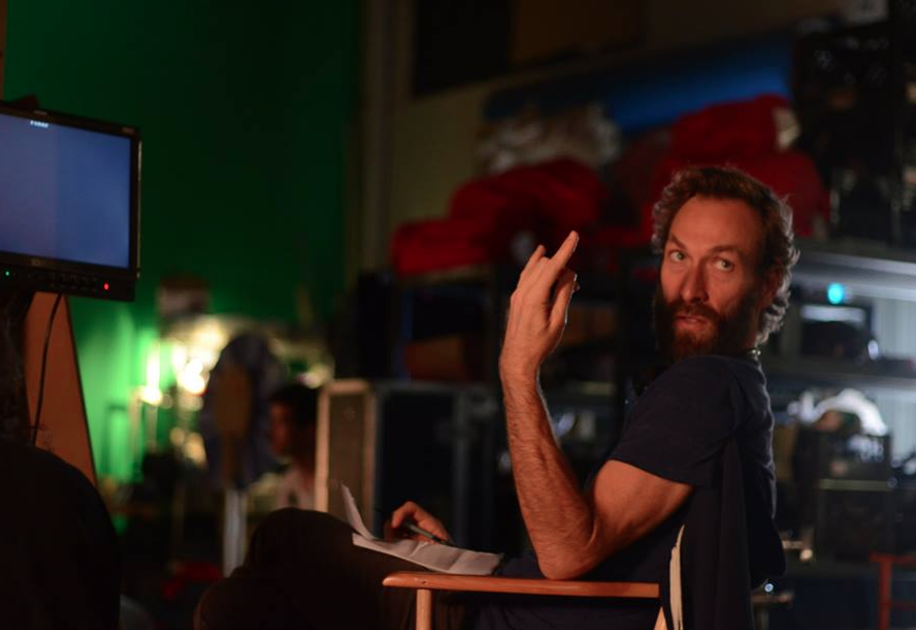
KDJ: Dave Made a Maze was your directorial debut, but was it your first time behind the camera? Why do I see you with a Lego stop motion home movie collection? Did you experiment with movie making as a kid, or are you just a natural?
BW: I made a bunch of movies with a VHS camera in the 80’s (I’m actually making a short film about the restoration of one of them now!), mostly alien invasion stuff using firecrackers and GI Joes. There were a couple decent effects and gags sprinkled around the utter incompetence, but most of those have been lost to time. Then there was a giant gap between maybe 8th grade and my 30’s where it didn’t really occur to me that making movies, even shorts, was something one could do.
I wrote and acted and worked on a web series for a bit after I moved out to LA—I hesitate to say I directed it, as the DPs did most of the visual decision-making, but I did learn a ton as my partner on that (John Charles Meyer, who went on to produce ‘Dave’) and I worked on the edit. It’s true that you don’t know a thing about how a movie is made until you’re in an edit bay. Cutting in camera on a VHS machine when you’re 13 doesn’t really count. But we had some fun!
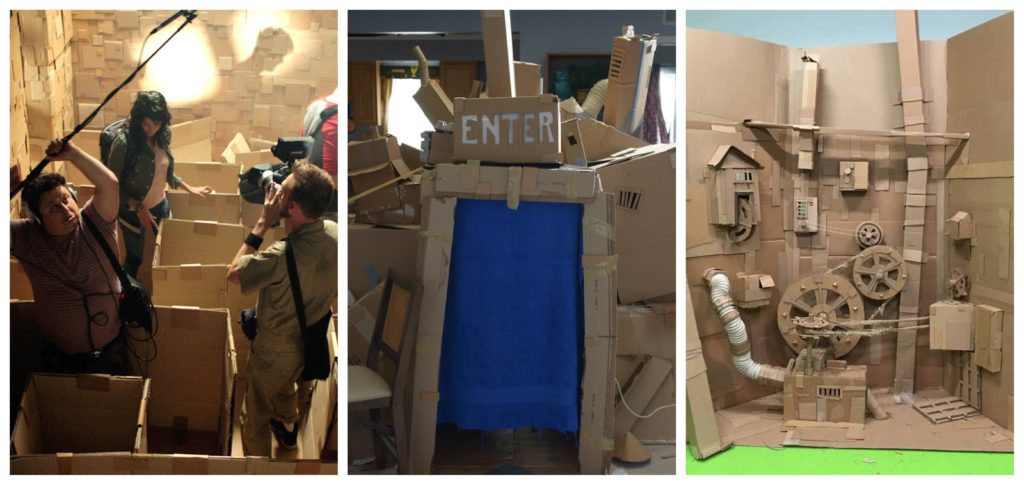
KDJ: The cardboard. Where did you get all that cardboard? Was there a specific artist that you were able to bring on who brought the cardboard to life so fantastically, or was it a team effort?
BW: Almost all of the cardboard was free. American Apparel gave us a ton, and some of it helped define the look of the movie –their spindles provided the spikes that killed my dude from OKGo, and the sheets of cardboard with holes in them inspired the look of what came to be known as the Kubric Room, the hexagonal tunnel that kind of looks like it was ripped from 2001 or Bespin. We didn’t have that idea until we had that cardboard. We also got a ton of donated stuff from friends, and raided the dumpsters at the West Hollywood Target complex.
But then we ran out, and John Charles Meyer approached the Solar City next to our soundstage and asked if we could empty their recycling dumpster, and they were fine with it. So he and a couple PA’s went out most mornings and collected cardboard from our kindly neighbors to get us through the rest of filming.
John Sumner, the Production Designer who gave us our beautiful design bible that helped establish the look of the film, had worked in cardboard as a medium before. As had Jeff White. And Jeff brought Michael Murnane down from San Francisco who also is a fine artist that works brilliantly with cardboard. He executed the Minotaur head and Cardboard Brynn’s face and Dave’s cardboard hand and a bunch of other visual lynch pins of the film.
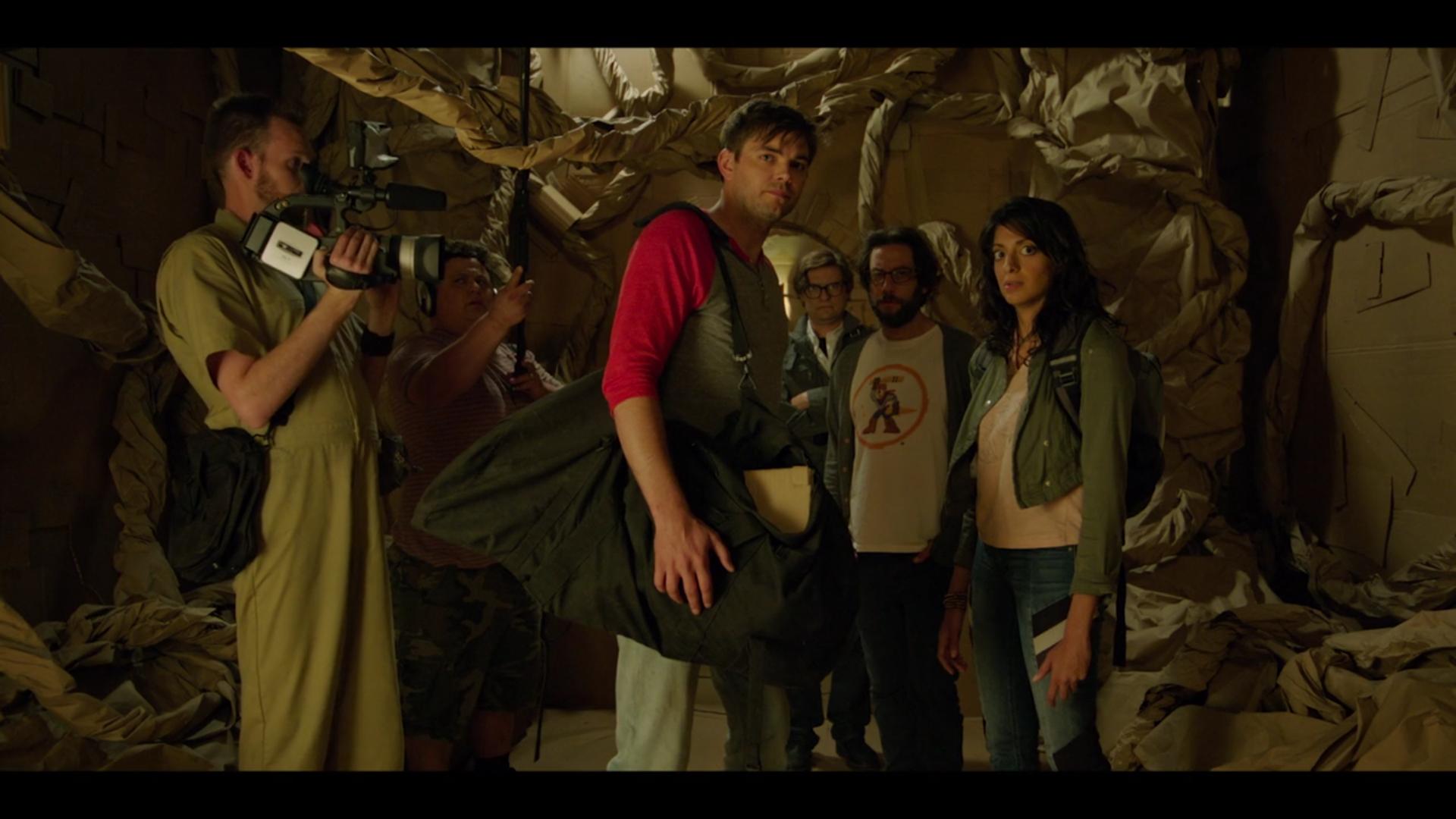
KDJ: The cast seemed made for the script, like the parts were written specifically for them. The strength in their communication with one another is impressive, something very rare for a low budget indie. Were they friends of yours before this project, or are you just a damn good director?
BW: That was yet another element of our impossible luck. The original script was actually written to star all of Steve’s friends and acquaintances, or at least was written with their real names and based on their real personalities. Harry was originally Bill, an ambitious but frustrated hack filmmaker who is always out of his league. Guilty!
Some of the cast were friends of ours, or friends of each other’s. Scott Narver and Frank Caeti, the film crew, were friends from Second City. Frank taught and directed there and Scott was part of Steve’s comedy group, and another key contributor to our vaudeville show. Both Adam Busch and Scott Krinsky had been special guest stars on the vaudeville show, and Adam had been in another project I wrote and acted in, but didn’t direct. Krinsky and Kirsten were friends of my producer John. Rick Overton was a friend of Scott and Steve’s, as was John Hennigan, whom I had met socially. Tim Nordwind is a friend from my rocker days.
Nick visited us during the build to make sure we weren’t assholes, but we had never worked together before. I met Meera on Skype before she accepted the role, and I met James, Stephanie and Kirsten when they arrived for their first day of shooting. All the roles were offer only, meaning no one auditioned, and we had no table read or pre-production rehearsals. Nick and Meera shook hands, total strangers, and immediately were brought to set for a photo shoot depicting a couple in love for the pictures on the walls of their apartment. Nick and Adam didn’t know each other either, but got right to work that first day.
But I have to say, writing really helps with that—as silly as ‘where’s that beard at’ is, it also does a lot of heavy lifting for the actors. These guys are old friends that have this inside joke, and if you play it real, commit to it, then the impression of years of familiarity is there, the camera will see it. An eyeroll from Meera seals the deal—how many hundreds of times has she had to deal with this inanity from these old friends? Good writing and good actors will save your ass every time. Then have a brilliant craftsman like Jon Boal shoot it, and you’ve got yourself a movie.
We got very, very lucky. Everyone was there for the right reason, to have fun and try to make something batshit silly. Everyone was prepared, got what we were trying to do, and brought all of themselves to work every day. It’s ridiculous how lucky we got with that cast. I owe them everything.
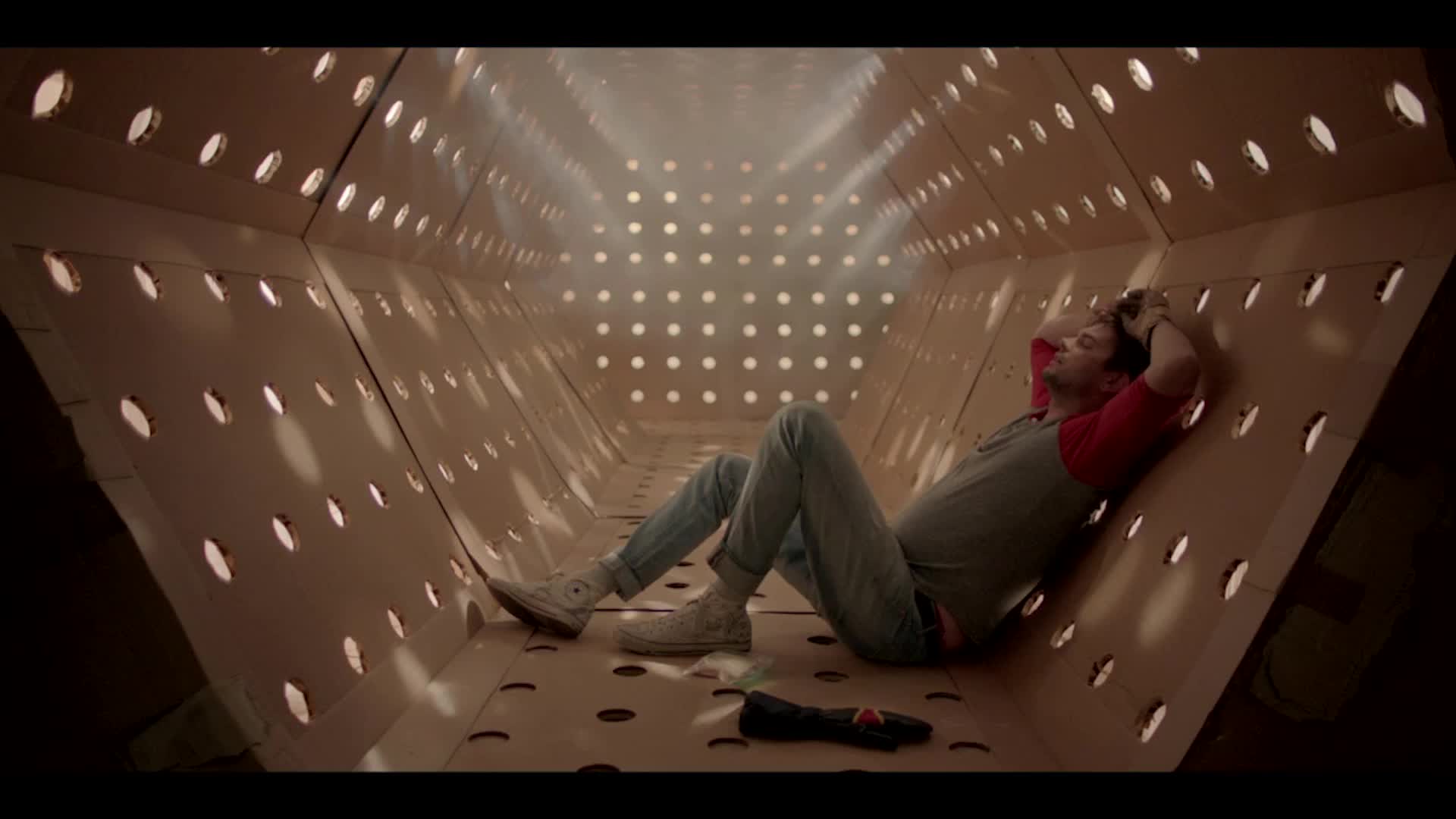
KDJ: This movie was released before the pandemic and was very relatable to anyone understanding the frustrations of the creative process, but now it seems to mean even…more. It speaks to the isolation, the apathetic attitude of older generations toward the younger ones facing a much different set of circumstances as they try to establish themselves, even the fact that homelessness has become so ‘normal’ that Annie invites one to a house party. Maybe I’m reading too much into it, but it seems like there are a lot of deep issues cleverly explored in this film. Was that intentional, or a fortunate byproduct of the massive problems we are now facing?
BW: It wasn’t written or produced from a place of happiness. That storyline was born out of frustration, a very real, palpable frustration that all of us felt. More than one person was drawn to the project because they felt we were making a movie about them, and what they were going through. Which is kind of a ridiculous thing to say about a movie with a giant pulsating cardboard vagina, but there you go.
I don’t think you have to be a creative person to feel the frustration of the inability to complete a task, whether that task is a painting, a novel, organizing the garage, or just figuring out how to mature and age and have satisfying relationships without wanting to go crazy. There are a lot of forces in the world working against those of us who think and feel, which is all of us. Very few things about getting older are easy.
I worked very hard to make sure the film had something to say, a grounded emotional core, in spite of its insanity. That was my primary contribution to the film. It’s very much about an imploding person whose downward spiral is threatening to take the people that care about him down with him. That can resonate with everything from an artist to an addict to someone with arrested development or fear or resistance to the changes that come with aging, or even with just being alive. I mean, to be alive is to age, to face constant change. The emotional climax of the film is the exploration of a relationship in crisis, and the thing I am most proud of.
But the hobo bit was a cheap gag, and one I would handle differently all these years later.
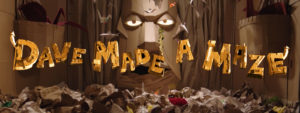
KDJ: The movie is phenomenal. Considering the fact that you had virtually no room in the budget for marketing, what did it take to get it in front of so many viewers?
BW: Time. We didn’t get a rock star distribution deal, so it’s been mostly word of mouth and time. We always knew the movie would be a slow burn, but I think we secretly hoped for a wildfire. Hulu was great for us back in 2017, Shudder has been great for us this year, Arrow crushed the UK release, I think it’s done well in Japan (where it was retitled ‘Killer Maze’!), Pandastorm in Germany did a beautiful release. We were treated quite well on the festival circuit, by programmers, audiences and the genre press.
Of course I’m thrilled any time someone finds us, but it stings a little to be on every list of ‘Great Movies You Never Heard Of,’ or to read that someone ‘stumbled upon it’ and can’t understand why ‘no one has heard of it.’ We put everything we had into the film, and while we all knew it was a relatively small film that wouldn’t be to everyone’s taste, we do want as many people to see it as possible. I hope it continues to find its audience. Cardboard is timeless.
That would be our tagline if we were a maudlin 90’s drama…
KDJ: Now that it is circulating on streaming services like Prime and Tubi, do you have any plans, any wish to get Dave Made a Maze in front of larger audiences again?
BW: Everyone has so many great stories from making the movie, I’m always down to get a group together for a Q&A or special screening. I think there are great opportunities for experiential screenings, with some interactive elements, although it will be hard to out-do the Chattanooga Film Fest, who gathered volunteers to rebuild significant portions of the sets for viewers to explore on their way into the screening!
There’s got to be an Escape Room tie-in somewhere, right? Or an interactive maker’s space event? Puppet building? We’re down for whatever!
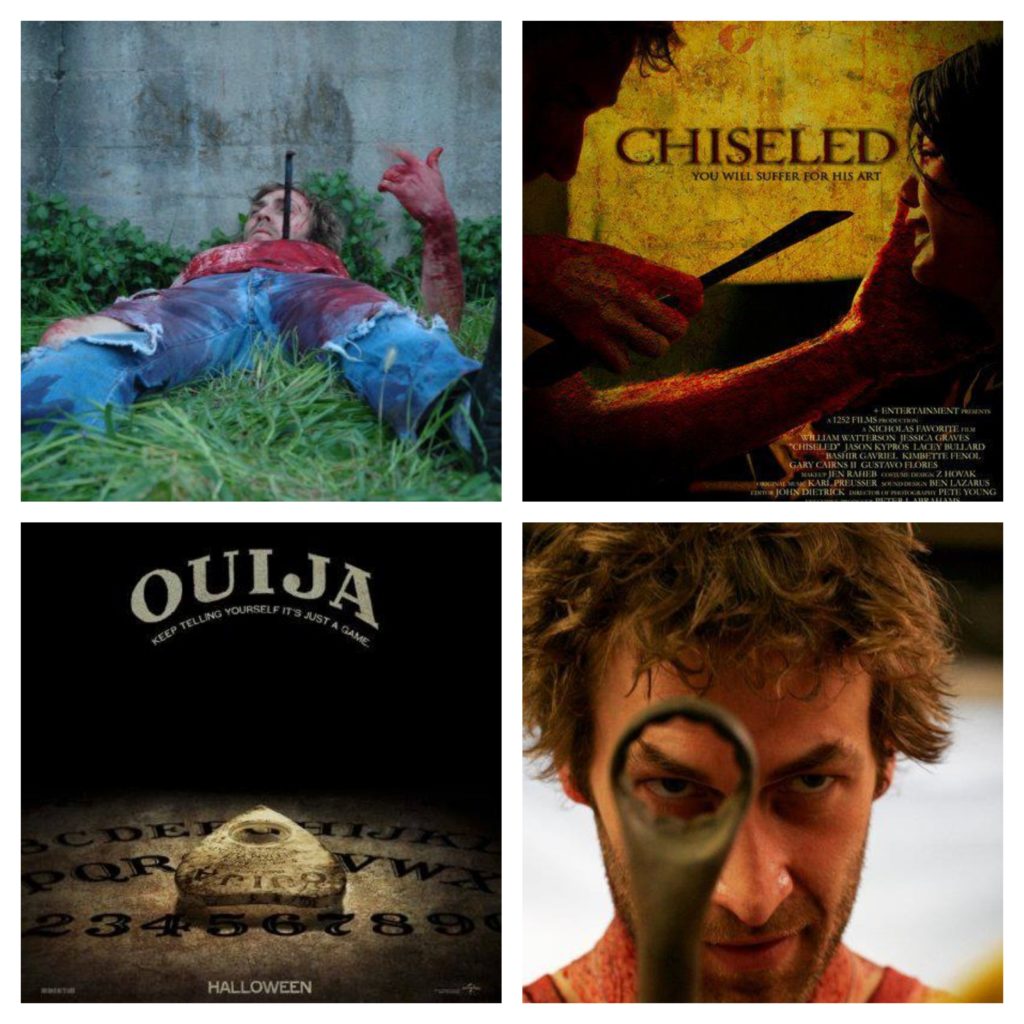
KDJ: Before this movie you were known as an actor and a musician. What drove you to take on writing and directing a full length movie?
BW: Probably how much being an actor and a musician sucked. I don’t know—there was something incredibly satisfying about bringing something to life that had a finite and tangible end game, that the other aspects of working in entertainment maddeningly never provided. I also did enjoy calling the shots, driving the ship—as much as I heavily relied on so many others, an incredible team, a dream cast, great source material, I really can’t emphasize enough how collaborative the effort was, at the end of the day I was making the call, and while that can be a crushing responsibility, it is rewarding. Particularly when you are being driven by an internal vision.
As a bass player, as an actor with two or three lines, you’re a cog in a bigger thing. It’s never your show. The director relies on so many people, hundreds, to get something made, but somehow you don’t feel like a small cog. You’re willing something into existence, as opposed to servicing something in some small way. There are pluses and minuses to that, but I have to say, it suits me.
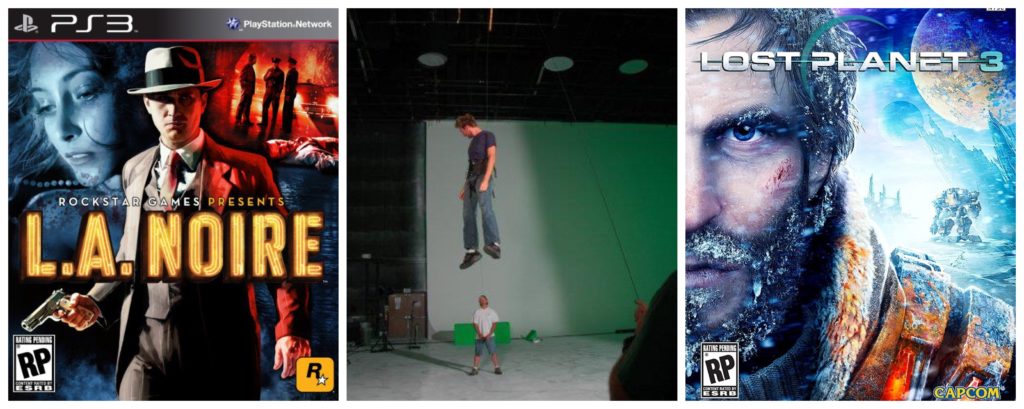
KDJ: You will also be known to gamers for your roles in God of War and Lost Planet 3. What is it like to be the immortal face of a video game character? What was it like to perform in a motion capture suit?
BW: Oh man I wish so badly that video game work had panned out more for me—Lost Planet and LA Noire was some of the most fun I’ve ever had. Great scripts, great creative teams, wonderful friends, got to work with so many talented actors, got to do stunts and run around with fake guns and talk tough, all the fun stuff I did when playing as a kid. I really loved it, and pushed hard for that to be my career, but it didn’t pan out. Perhaps I was destined to become a director.

KDJ: It seems like you’ve just about done it all, but I’ve read that your favourite job was being a bassist in a band. Would you like to talk about that? I know you want to talk about that. How much fun is it to be a bassist?
BW: Nothing will ever compare to the freedom of being in the zone on stage during a live performance of some goddamn great rock n roll. It’s a unique combination of body, mind, spirit, creative collaboration, all firing on all engines, in sweaty immediacy. You feel like an exploding star illuminating every dark corner of the world, you’re a battery for the best time anyone’s ever had, you’re indestructible, just truly free in every cell of your existence. It’s incomparable to any other experience I’ve ever had, and I miss it every day.
KDJ: I stalked your recent tweets to see what you’ve been up to in preparation for this interview, and one in particular intrigues me. October 26, 2021: “The Coffee Table Book of amazing projects I can’t get made is going to be epic.” Of all the projects running circles in your mind, which one would you tackle next if you had unlimited time and funds? You can be brief or cryptic, we don’t want anyone stealing it!
BW: I’ve written three movies that are quite different from one another and I’m incredibly proud of them. I’m working on a fourth now. And I’m out with two TV projects that are pretty special. I would bring any one of the projects to life given the opportunity. They are all stories I am burning to tell, and unique, tonally specific worlds whose challenges I’m dying to take on. But it’s a tough business, so I’m finishing up the short film I mentioned earlier in the meantime, because it didn’t take much money to execute.
KDJ: What are you working on now? Will we ever see another Bill Watterson mad genius creation on the big screen?
BW: See previous answer! Never not writing, never not trying to get my work in front of people who see what I see and, like me, can’t rest until we bring it into the world.
KDJ: To all of the indie creators reading this article, what would you like to offer as your advice for sticking with it/not giving up?
BW: You don’t get better at something by not doing it. No one is coming to help, or hand it to you. You may know you want it bad, but knowing and wanting aren’t enough—you have to act. Your whys have to be better than your excuses. Now I’m just quoting my boxing coach (shout out to Coach Justin Blackwell!). There’s nothing romantic about suffering—look for people and things that make you happy along the way. Take care of yourself, it isn’t anyone else’s job to take care of you, and even if it is, they might suck at it.
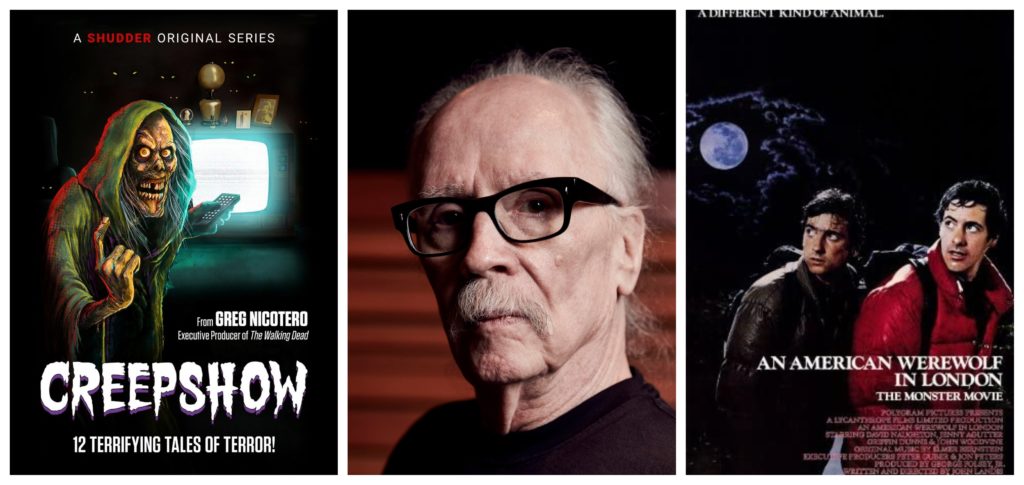
KDJ: Last question(s), I promise. As most of our readers are horror fans we all want to know: what is your favourite horror movie of all time? Who is your horror inspiration? Favourite horror sub-genre? Most famous horror person you’ve ever met? Horror person you’d most like to meet? Any other horror-related trivia about yourself you’d like to share with us?
BW: It’s interesting—I watched a LOT of schlock when I was a kid. We mostly watched horror to laugh—The Nail Gun Massacre, Blood Sucking Nazi Zombies, Creepshow. The stuff that was any good gave me nightmares cuz I saw it pretty young, and I didn’t love having nightmares (Poltergeist, Exorcist, Salem’s Lot, Friday the 13th OG). But then you get to a place where you want to test yourself and be scared, but that’s pretty rare. I remember going to see Serpent and the Rainbow in the theater and really wanting to be scared, but it didn’t happen. Even the Hellraiser movies and the Elm Street jams were more about goo and gags than being scared.
There’s the fun of wild kills and icky gore, but that’s not the same as horror. There’s crossover, but they’re not equivalent. The psychological elements of horror have much more staying power, and are far more difficult to achieve onscreen.
Most of the stuff I really loved wasn’t horror, but adventure movies with horror elements—King Kong (OG), Godzilla, Raiders of the Lost Ark, Treasure of the Four Crowns, Gremlins, Dreamscape, Aliens, Road Warrior, Spacehunter, Clash of the Titans (OG), all the Harryhausen monsters. Not horror, but creatures, fantasy worlds or realities with infinite possibilities including a bunch that scare you and could kill you.
It wasn’t until more recently that I’ve found the movies that use horror to tell a much deeper story. American Werewolf in London is a singular accomplishment. I mean, you can’t beat John Carpenter’s The Thing, or They Live. I’d love to meet him, but I suspect I would bore him. I think the truth is I’d love to know him…that’s different than just meeting him, you know? Tigers Are Not Afraid was pretty special, I’d love to be friends with Issa Lopez. I got to meet Kane Hodder when I was a PA back in Cleveland, he was stunt-driving for a Toyota commercial. He was nice! Showed me the HATE tattoo he had on the inside of his lip when we were comparing ink. He won…
Kate’s final words to Bill: I just want to say thank you for taking the time to talk with a little guy and share so much with our readers. While my primary reason for writing this article was to entice more viewers to watch Dave Made a Maze, I truly hope that they stick around to see what’s next from “Bill Watterson and his band of evil geniuses”. And not for nothin’, but I seriously doubt that John Carpenter would find you boring. “Dave” worried that he bored his parents in your film; take it from a mom, he didn’t. If there’s one thing this interview with you has taught me it’s this: reach out when you are intrigued. You never know who might be happy to talk with you!
Dave Made a Maze is currently available on multiple streaming services. Follow Bill Watterson on Twitter at @billtweeterson.
More Interviews
Jasper Bark, UK horror author and unapologetic madman, is currently celebrating the release of his new trilogy, Draw You In. I do not remember how I stumbled across the first… Pinku Eiga, the taboo territory for many enthusiasts of Japanese Cinema. What exactly is it? Are these pictures merely exploitation flicks? Where to begin with the genre? Let’s explore the… The Grimoire of Horror is proud to present our first foray into video content with an interview with director Matthew John Lawrence and actor David Littleton of the punk rock… Ahead of NYX UK’s season of Simon Rumley films in December, the award-winning director talks candidly about therapy in filmmaking, his past fear of contracting AIDS/HIV, and being kicked of…An Interview with Jasper Bark – Author of Horror Trilogy Draw You In
Into the Pink Whirlwind: Interview with Jasper Sharp
Interview with Matthew John Lawrence and David Littleton of Uncle Peckerhead [Video Content]
An Interview with Simon Rumley
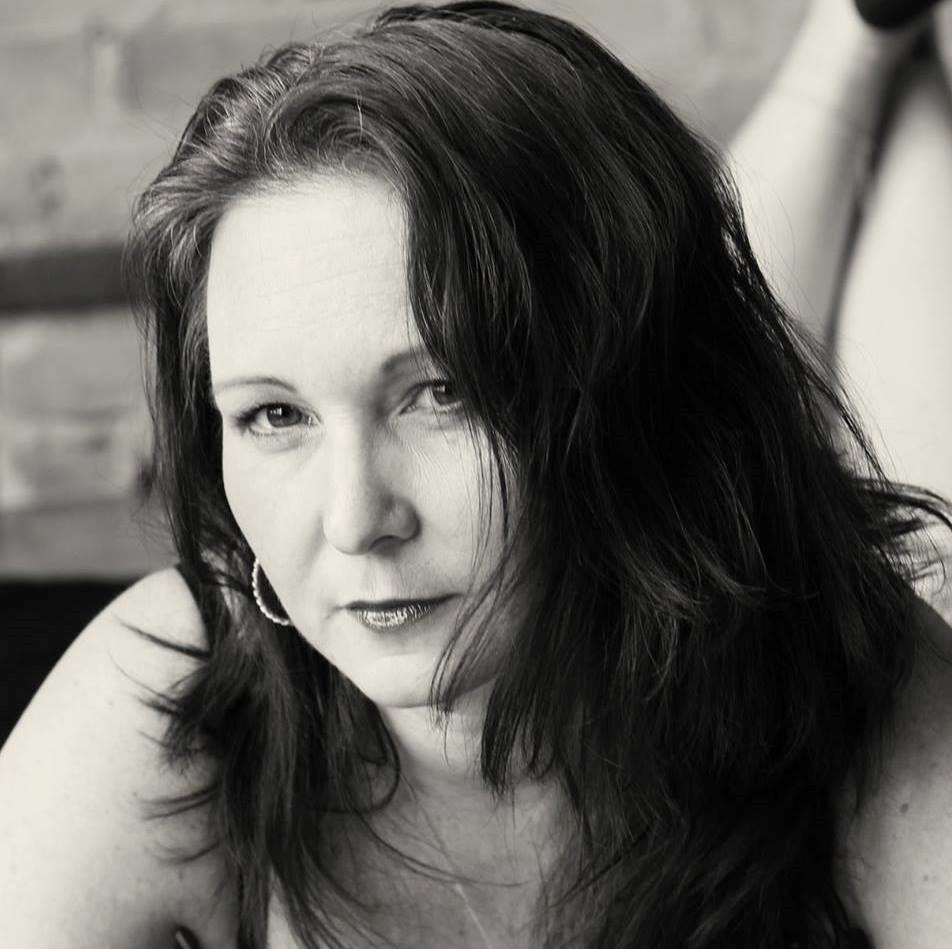
Kate’s love of all things dark began as a child and deepened when she realized what being an adult meant. She was born with a pencil in her hand and loves nothing more than writing horrific stories to tantalize her inner demons. Kate lives in Hamilton, Ontario Canada with her husband and her boys, stirring up trouble wherever she can.

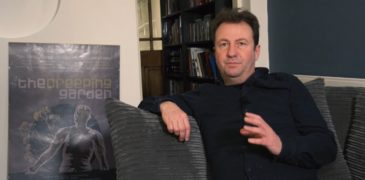
![Interview with Matthew John Lawrence and David Littleton of Uncle Peckerhead [Video Content]](https://www.grimoireofhorror.com/wp-content/uploads/2021/03/uncle-peckerhead-review-365x180.png)